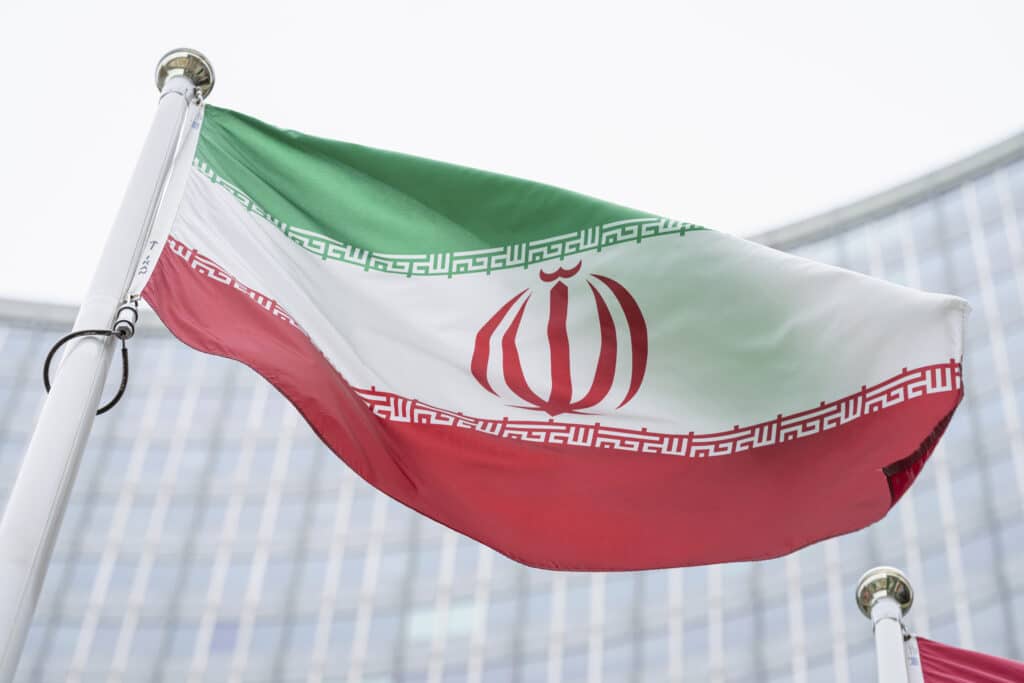IRAN‘S NUKES: THIS TIME THE WOLF IS HERE
About 25 years ago, as a junior State Department bureaucrat, I was tasked with introducing a senior American official to his Israeli counterpart, over dinner at a trendy beach side restaurant in Tel Aviv. The American asked, as was usual in those days, about the peace process with the Palestinians; to which the Israeli responded, “I’m happy to talk about that — but my main mission is to prevent a second Holocaust.” “What?” said the stunned U.S. official. “I mean,” replied the Israeli matter-of-factually, “the Iranian nuclear program.”
Fast forward to today. Rhetorical exaggeration aside, what was once a distant threat now seems much more present. Iran’s nuclear weapons program is no longer years or even decades away from completion, but on the verge of a real breakout. And its ideological commitment to Israel’s destruction is as intense as ever, buttressed today by a far-flung network of non-nuclear but deadly missiles, militias, and other military means.
Yet even now, almost at the last minute, there is still hope for a diplomatic delay if not solution to this looming crisis. The Vienna negotiations over Iran’s nuclear program resumed this week, but adjourned again after less than an hour. Yet Russia called this session “constructive,” although it had only very recently voiced rare skepticism about Iran’s intentions. France, the UK, and even Germany had added their voices to that chorus of criticism against Tehran.
The U.S., which had only very recently relaxed enforcement of some sanctions against Iran, is now busy tightening them again. American and Israeli officials are also conspicuously consulting, and even speculating out loud, about possible military scenarios. Meanwhile, high-level Arab delegations are talking to Tehran, with quiet American encouragement, about positive economic incentives for a nuclear deal. Taken together, these signals point to a more concerted international effort both to press and to entice Iran toward a compromise – and with a reasonable chance of eventual success.
The problem, however, is that Iran is already much closer than ever to a nuclear bomb: probably only weeks away from enough 90% enriched uranium, and a few months away from its crude weaponization. Once sufficient fissile material is in hand, it becomes much harder for outsiders to find and neutralize it; and basic weaponization could probably be performed in a very modest ordinary building, nearly impossible to detect from afar. Delivery systems, too, need not be very obvious, sophisticated, or large, like advanced missiles; instead, a simple airplane, or even a boat, might suffice.
Therefore, a “compromise” that leaves Iran with these capabilities, or anything like them, guarantees that it will remain a nuclear threshold state. Thus the imperative today is not merely to freeze, but to roll back, at least some of Tehran’s advances from the past two years. This is a difficult yet not impossible challenge.
Still, even if a new deal is achieved, that almost certainly means that Iran will retain much of the material and the know-how needed to break out toward a bomb relatively quickly some day – while avoiding the prospect of tough sanctions or of a military strike. Once again, a deal would only buy time, without resolving the problem. And it would buy less time now than the original agreement in 2015.
That, unfortunately, is the best-case realistic scenario. It is far preferable to a military strike against Iran’s nuclear facilities, which would also only buy time – but at the likely cost of heavy retaliation. That retaliation would come both directly from Iran, and indirectly from Hezbollah and probably several other Iranian-allied militias, from Yemen to Syria, Iraq, and perhaps beyond. For this simple reason, there is almost no chance of such a military strike either while the nuclear talks straggle along, or after they produce a new agreement of any kind.
But if no deal is reached in Vienna, the odds of an Israeli military strike clearly go up very significantly. Israel’s decision-makers appear more united about this today than ever before. And American decision-makers appear less inclined than previously to oppose such a risky measure. The technical military issues may be as difficult as ever — or even more difficult, given Iran’s improved capabilities and countermeasures. But the crucial political will is now stronger, on both the Israeli and the American sides.
Such a strike need not necessarily target only Iran’s nuclear program; other high-value military or perhaps political assets could be on the list as well. And even if Washington did not actively support it, the U.S. would surely come to the defense of its Israeli or Arab allies against Iran’s retaliation. That would be true, for both domestic and foreign policy reasons, despite the severe distraction this would pose to the current American focus on great power competition with China and Russia. In the end, we are left with yet another instance of the ancient Roman maxim: Si vis pacem, para bellum (if you desire peace, prepare for war). That grim specter, along with the economic pressures and promises lately put in play, holds out hope that diplomacy can still stave off the current crisis. The Iranian nuclear wolf is indeed very nearly at the door; but the window for a last-minute reprieve remains open – if only temporarily.
Disclaimer: The views and opinions expressed in this article are those of the authors and do not necessarily reflect the official policy or position of Newslooks.com







